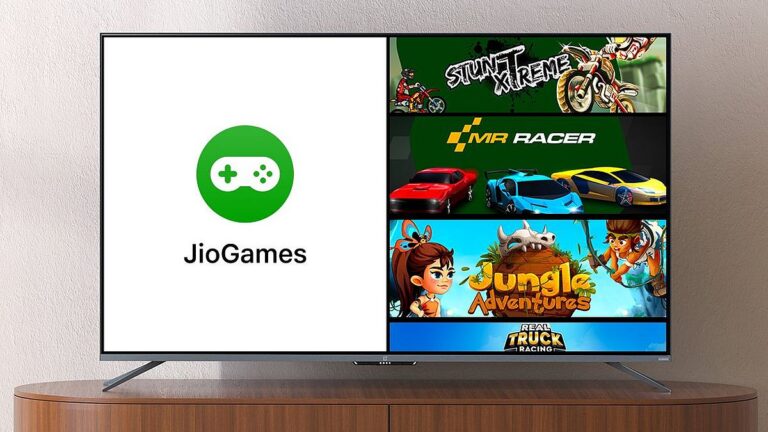Marvel’s Spider-Man 2 Review: Insomniac Games’ Ambitious Sequel Swings for the Fences
What makes a good Spider-Man story? Aside from capturing the mythology of the quippy, affable, web-swinging hero, it also must present great adversity for him, and not just when he’s wearing the mask. It cannot be a Spider-Man story without Peter Parker. Unlike other superheroes who can wear a cowl and leave their identity behind, the two are inseparable. Spider-Man swings into a fight, but it’s Peter who takes the punch. It must also ground Spider-Man in the fragility of human experience. The wall-crawler is strong, but he must learn that we all break. A great Spider-Man story must also deal with personal tragedy. No matter how many times Spider-Man wins the day, it’s his loss that defines him. Marvel’s Spider-Man, Insomniac Games’ first attempt at telling such a story, succeeded on most, if not all, of these parameters. Aside from being incredibly fun to play — with polished web-swinging, an incredibly detailed New York City to explore, and butter-smooth, flowing combat — the first game understood the essence of a Spider-Man story, serving one of the best narratives for the hero perhaps seen across all forms of media.
But a wise man once said, with great power comes great responsibility. Marvel’s Spider-Man 2, Insomniac’s ambitious sequel that comes out October 20 on the PlayStation 5, has to shoulder the weight of that responsibility. It also has a much more complicated job to do. For starters, it also must tell a Miles Morales story, one that lives and breathes on its own, even as it’s inextricably linked to Peter Parker’s journey. And, it also choses to tell a Venom story, which can’t just get the same treatment as any other supervillain from Spider-Man’s rogues gallery. The villains in Spider-Man media are usually well-written and don’t just exist only as a foil to our hero. The first game charted Dr. Otto Octavius’ transformation into Doctor Octopus with great care, too. But Venom is a different beast altogether. Between the dark manifestations of Symbiote Spider-Man, the anti-hero reverence of Venom itself, and Insomniac’s decision to go in a different direction with the iconic character, Spider-Man 2 has to pull off a juggling act. It also has to incorporate Kraven the Hunter, a formidable villain in his own right, into the story in a way that doesn’t feel like a throwaway idea. And with so many moving parts, there is a high risk of the machine breaking down.
In the expert hands of Insomniac Games, however, Marvel’s Spider-Man 2 does justice to its every idea with astonishing style and incredible substance. It marries the freedom and fluidity of Spider-Man mechanics with the heart and soul of a Spider-Man narrative, and it does it with apparent love and reverence for the source material and obsessive attention to detail. And between the breathtaking action and its breakneck speed, Spider-Man 2 pauses in all the right moments to shine a light on its characters, even the ones who are supposed to be on the side. Just as Insomniac had promised, the game tells considered stories about the men behind the mask, the friends who stand by them and push them to be better, and their enemies who just about break them. There are no shortcuts here; both friends and foes are fully realized characters in Spider-Man 2. Over time, you get to know them as people and understand what drives them to do what they do. The personal journeys of both Peter and Miles are balanced almost perfectly as both of their stories play out in tandem. While not on a mission, the game lets you switch between the two Spider-Men at will, but it carefully constructs and arranges main story segments dedicated to each with equal respect and regard.
And beyond its narrative flair, the new Spidey sequel excels in being a robust Spider-Man game, bringing improvements and ideas to nearly every aspect. The already-excellent web-swinging is even more fine-tuned here. It is faster and feels more tactile than its previous iterations, complemented naturally by the new web wings, which let you glide across the New York skyline and survey all that’s beneath you. The combat adds explosive new abilities, fuelled by the alien symbiote and Miles’ new electric powers. And all of it looks better, too. The foundation existed from the first game and 2020’s Spider-Man: Miles Morales, but here Insomniac builds a few floors on top of that.
To call it a fresh coat of paint would be doing it a bit of a disservice. New York is not only bigger, it’s also more detailed in subtle ways. It is still, of course, very much in the vein of an Insomniac Spider-Man game, with no radical changes to the formula. And it’s not without its imperfections, especially when it comes to the narrative. While 2018’s Spider-Man told a contained, singular tale with Peter at the centre of it all, the sequel ambitiously stuffs its plate with a lot, often feeling messy and ill-paced. It manages to pull off a few great surprises, but also settles for a few safe and ultimately disappointing bets. By the end, you can’t help but feel that Insomniac could’ve maybe given its game a little more time to play out. Considering all that it packs and then tries to unfold one by one, Spider-Man 2 is lean — perhaps leaner than it should be. I finished everything there was to do in the game, all side quests, activities and collectibles, reaching 100 percent completion in under 35 hours on the Spectacular difficulty. And if you stick to the main story with purpose, I’d suspect you’d see the ending in under 20.
![]()
With Peter and Miles and a host of interesting characters, Spider-Man 2 can at times feel overstuffed
Photo Credit: Insomniac Games/ Sony/ Marvel
Spider-Man 2 begins with a boss fight — one that’s heavily inspired from Sam Raimi’s Spider-Man 3, and taking place at a scale we haven’t yet seen in Spidey games from Insomniac. The opening sequence, aside from being a visual showcase, also emphasises that this will be Miles’ story as much as it is Peter’s. Both of them are in a complicated time in their lives. Peter is as always struggling to balance his personal life and his ambitions with his obligation to be a hero for his city. He must pay bills on his late Aunt May’s house in Queens, where he’s moved in recently. And he’s also reckoning with the return of his best friend Harry Osborn. Miles, on the other hand, is having a tough time dealing with his college application essay, finding an escape instead in his masked adventures. He’s trying, and often failing, to be more Miles than Spider-Man, especially in his relationships with his mother and his close friend Hailey Cooper. Miles’ young mind also grapples with complex feelings of anger, revenge, and forgiveness when Martin Li, responsible for the death of his father in the first game, escapes during prisoner transport early on in the game.
Before all hell breaks loose when Kraven the Hunter arrives to the Big Apple and takes a bite, Peter and Miles get to be who they are with the people they love. In the early section of the game, there’s an especially beautiful flashback sequence after Harry returns in Peter’s life, where we get to see their old stomping ground, Midtown High. Peter also spends time with his girlfriend and intrepid reporter Mary Jane Watson at home, reliving memories of aunt May and his time with her as a young adult. These slowed-down sequences are melancholic and reflective, bringing you closer to Peter’s life and loss. It also wistfully shows the passage of time and all the ways the characters have changed, and in some ways, remained the same. Kraven becomes the storm that disturbs the calm as packs of his minions take over parts of the city, hunting down big-game from Spider-Man’s rogues gallery. Li, Rhino, Scorpion are all on the list, but Kraven’s ultimate prize is Lizard. In his efforts to forcefully transform Dr. Curt Connors into the green and mean reptilian beast for the purpose of a glorious hunt, Kraven clashes with the two Spider-Men.
The first act of the game deals with Kraven and his meticulous, obsessive and near-suicidal hunt as Peter and Miles try and figure out his motivations. While it’s difficult to talk about the ensuing story without delving into spoilers, at some point Peter obviously acquires the black symbiote suit that grants him new abilities and a new, darker outlook, too. As time passes in the game and the symbiote starts affecting his mind, the friendly neighbourhood Spider-Man doesn’t remain as friendly as he usually is. This brings Peter in conflict with both Miles and MJ, who see him turning for the worse and intend to help him. Kraven, however, pushes Spider-Man to give in to the symbiote and release the beast within, as his attention turns away from Lizard to the alien organism that has now latched itself to Peter.
![]()
Peter takes a dark turn after acquiring the symbiote suit
Photo Credit: Screenshot/ Manas Mitul
There are familiar story beats that you can trace back to both comic books like Kraven’s Last Hunt and films like Spider-Man 3. But, Insomniac largely crafts an original tale, driving the narrative in surprising directions. An explosive ending to the second act follows, changing the course of the game and the fate of the characters. While Insomniac nails many twists in the tale on the way, perhaps its most important choice is disappointingly a safe one. The studio has kept its cards close to its chest when it comes to Venom, confirming early on that the iconic anti-hero will find a new host in their story. And true to their word, Eddie Brock does not feature here, but they also refrain from taking a bold decision that would have helped reinterpret the character in new ways.
The story’s three-act structure, while neatly condensed and almost perfectly punctuated, often suffers from inconsistent pacing, too. The first and second acts build up patiently, slowly revealing the cards on the table, but the final act runs out of time and rushes to an ending, almost ignoring everything else on the plate. Perhaps Insomniac intends to save some of those missed opportunities for a later DLC story, but it leads to incomplete ideas that do not get explored in Spider-Man 2. And with the impending introduction of Venom, the story falls a little short in giving the same spotlight to Kraven. Jim Pirri’s excellent voicework for the big-game hunter elevates the character as one of the most interesting in the game, perhaps deserving a little more regard than he is afforded. You can discover the reasons driving Kraven and his hunt, and unravel his family history and backstory over time, but I’d have liked to see more of the imposing villain. Kraven is formidable every time he is on-screen, but sadly he’s just not on-screen for long enough. Harry is also excellent here and his relationship with Peter is explored with care, but after a point he is reduced to a voice on the phone and a face on your screen, barely making appearances and only showing up in phone calls.
![]()
Kraven steals the scene every time he is on-screen
Photo Credit: Insomniac Games/ Sony/ Marvel
While early sections of the game pay more attention to Peter and his friends, Miles’ story shines out later. His dynamic with his mother and friends, his developing emotional maturity as he helps out his community, and his emotionally loaded confrontation with Mister Negative are some of the best parts of the game. Miles is presented as all teenagers are, but he grows in stature considerably over the course of the game, almost becoming the default Spider-Man, I felt. He is not just the hero who saves the day, but he’s also a good friend and son. His relationship with Hailey, especially, is depicted with a level of sensitivity that’s rarely seen in games. And it becomes increasingly clear over time that Miles’ presence in Spider-Man 2 represents a moral compass for the whole story. With Peter’s dark turn after acquiring the black suit, Miles becomes the light you look for, helping his fellow Spider-Man and those around him. And while the veteran Yuri Lowenthal excels as Peter, channelling his disturbing transformation with menace and motive, Nadji Jeter’s emotional earnestness as Miles is perhaps the beating heart of Spider-Man 2.
There’s always been discussion on how a superhero game must play. There is a simplicity to the genre that must translate into its systems. All superhero games must, after all, be accessible. But, it must also go deeper below the surface to explore the ethos surrounding the said hero. Few games have nailed the right balance. On one hand, Rocksteady’s Batman Arkham games set the modern template for superhero games, Gotham Knights from the same publisher, on the other, failed to recreate an authentic world for its characters to live in. Insomniac’s Spider-Man games have learnt from titles like Arkham City and have found their own feel, especially with the rich history of Spider-Man games behind them. Spider-Man 2 continues in that tradition, while bringing some new ideas that play around with the feel of the game. Insomniac, obviously, have not ripped up the playbook here. This is firmly familiar, sharing the same DNA the defined its predecessors, but in all the good ways, mostly.
Web-swinging remains simplistic, bound to a single-button input, but it feels a little more refined in subtle ways. The improved animations help and you’re now hurtling through the city faster than ever. Much has been talked about the web wings already, but the way the new feature works together with web-swinging is truly a revelation. With a press of the triangle button on the DualSense controller, you can deploy the web wings at any point in the air, and hit back R2 to transition into a swing to gain momentum and altitude, before you glide out again to your destination. Wind tunnels and updrafts scattered thoughtfully across New York hand you a boost when you’re running out of juice and let you cover great distances in lightning-quick time. This new way to traverse the world of Spider-Man also comes with dedicated missions and side activities that add meaning to the method. Exploring Marvel’s New York, as I mentioned in my preview for the game, is nothing short of virtual tourism, indeed. Every borough feels alive and distinct, with an unbelievable amount of detail painted on everything you see. Just swinging and gliding around, discovering landmarks and easter eggs is a fun activity in itself, no matter if you’re engaged in a mission or not. There are some nifty additions to swinging, too, with a whole skill-tree arm dedicated to adding new traversal abilities. Both Spider-Men can now slingshot at any point while standing to hurl themselves through city blocks at ridiculous speeds. You can also loop around like a human Ferris wheel, holding on to your web and gaining extra speed when you launch off.
![]()
Web wings help you explore New York in a whole new way
Photo Credit: Screenshot/ Manas Mitul
Combat sees more changes, with symbiote abilities bringing a whole new way to fight. The sequel also brings increased enemy variety to counter Spider-Man’s more devastating abilities, with Kraven’s robotic hounds and birds in the mix, in addition to a few surprise enemies I wouldn’t want to spoil here. Peter’s Spider-Man can switch between his traditional arachnid skills and the new, more vicious symbiote skills once he acquires the new suit. You can shoot out black tentacles, grab multiple enemies, lift them up in the air and violently slam them down. Or you can pounce on your foes and explode into black symbiote goo. You unlock new abilities as you progress, eventually gaining Symbiote Surge, an ultimate ability that you can trigger once your surge meter is full. While in surge phase, each attack lands violently with the weight of a freighter, essentially turning into a one-hit finisher.
Peter’s newfound abilities are the highlight for the combat in Spider-Man 2, but Miles is not far behind. Early in the game, he develops new blue electric powers, in addition to his existing bio-electricity abilities. Now, he can shoot lightening beams at enemies much like Emperor Palpatine. He can also transform into pure electricity and drop on an enemy’s head in a thunderous special move. Both Spider-Men can also utilise the new parry mechanic, which when timed to the generous parry window, will throw back your enemies and grant a boost to the recharge speed of your abilities. This mix of returning and new combat skills keeps things fresh and familiar in Spider-Man 2. And both Peter and Miles get dedicated skill trees, along with an additional shared one, with each upgrade bringing meaningful additions to gameplay, instead of being sterile incremental perks to existing abilities.
In certain story missions, you’re also handed control of MJ, just like in the first game. And just like in the first game, these sections remain weak. Insomniac has tried to improve and add to MJ’s gameplay, but her segments never rise above an on-the-rails stealth experience, much in contrast with the dynamism of regular Spider-Man combat. It’s like you stopped playing a Spider-Man game and turned on a Ubisoft stealth game instead. Stealth sections with the two Spider-Men, however, see a marked improvement in the sequel. While stealthing and stalking your prey is more of a Batman thing, these sections help change the pace of gameplay. Now, you can aim at a wall or any piece of material construction within reasonable distance and press triangle to deploy a web line between the point and your location. This new ability transforms the stealth sections in Spider-Man 2, letting you spin your web up above, much like a spider, and create you own unique paths around the level as you slowly and quietly take down enemies. Stealth sections are given special attention in the game through hunter dens, which are infested with dozens of Kraven’s soldiers and stashed with secrets that reveal more about the Kravinoff family. Open combat here would be lethal and taking out a full den while you web up the place with increased freedom is a satisfying experience.
![]()
You can web up hunter dens to your liking and stalk your prey from above
Photo Credit: Screenshot/ Manas Mitul
Side activities and collectibles return in Spider-Man 2, promising an added layer of depth. These slowly reveal themselves as you move through the game, instead of instantly cluttering your map with checklist objectives. They also bring meaningful interactions with a few surprise characters in the game, along with perks that actually add to your arsenal. Some side missions can be completed by either Spider-Man, but some can only be taken up by a specific one. For example, only Miles can help out his classmates at the Brooklyn Visions Academy, and only Peter can conduct experiments for Harry’s Emily-May Foundation. During main missions, the two Spider-Men work together often, with the game switching between the two, handing you control of one or the other dynamically. And of course, with the presence of formidable foes like Lizard, Kraven and Venom, Spider-Man 2 features a few bombastic boss fights, in addition to some sneaky surprises.
Whether you’re fighting off a gigantic Lizard in the sewers or swinging over Central Park, Spider-Man 2 is a looker. Marvel’s New York City, now almost double in size from the previous games with the additions of Brooklyn and Queens, is dripping with mesmeric detail. The New York skyline is a stunning vista and climbing to the top of Avengers’ tower and looking out at the city spread below you never gets old. While it looks beautiful from high up in the sky, NYC is also densely detailed up close. Its streets are packed with people going about their day. You’ll see New Yorkers arguing, street vendors hawking hotdogs, and people sitting in silence in parks. Perhaps the most stunning technical leap here is the lighting. This applies to not just sunlit golden outdoors, but also to murky indoor crime dens. There are no visual modes in the game that do not include ray-tracing, and the sheer quality of lighting and reflections pushes Spider-Man 2 far beyond its predecessors in terms of visual fidelity, making it one of the best looking games on the PS5.
City sounds are excellent here, too, with the low growl of New York fading in and fading out as your swing too close to the streets and then zoom away. The fidelity of facial animations has gone up a notch, too. As Insomniac’s core tech director Mike Fitzgerald told us in an interview last month, a lot of the story plays out in the characters’ emotive faces. Character models for its villains — Lizard, Kraven and Venom — are especially well done, embodying their own creative language, while paying homage to the iconic styles that came before. The games lineup of Spidey suits, on the other hand, are a mixed bag. While iconic suits from comic books and films (my favourite is the classic red-and-blue webbed suit from Raimi’s movies) are a delight, some of the original designs fail to fit with the game’s overall aesthetic. Spider-Man 2 is also, ironically, bug-free. It is ridiculously polished, with eye-watering production value and barely any substantial glitches that break immersion — but that’s what we’ve come to expect from first-party PlayStation releases. It performs admirably, too, maintaining consistent 60fps on the PS5 in the Performance-RT mode, with reduced image quality. The 30fps Quality mode bumps up ray-tracing detail and resolution at the cost of frames.
![]()
Excellent lighting breathes life into both sunlit outdoors and murky indoor crime dens
Photo Credit: Screenshot/ Manas Mitul
Marvel’s Spider-Man 2 is a triumphant sequel in more ways than one. It treats the humanity of Spider-Man as a character with the care it deserves, furthering the story of both Peter and Miles in meaningful ways. It also brings comparable depth to the people in their orbit, both friend and foe. It opts to build on the gameplay foundations of the first game and the Miles Morales spinoff, but it takes no half-measures in that approach. Yes, there aren’t any radical changes to formula here, but that was never needed in the first place. Instead, it chooses to improve what was already good and tries to fix what was broken, with mostly emphatic results. While the thrust of its main story gets the spotlight, Spider-Man 2’s ancillary offerings lack the same rich flavour. There is a concerted effort to breathe more life into its side missions, but Insomniac’s newest release remains a little thin on things to do.
Spider-Man 2 surpasses the first Spider-Man in almost every aspect, delivering above and beyond what it’s expected to accomplish. In nearly every department, it swings hard for the fences and comfortably, stylishly sticks the landing, but it does hold back when it comes to its story. I’d argue that 2018’s Spider-Man told a better, more contained and emotionally affecting tale than its ambitious sequel does — at times taking on perhaps more than it should have, and diluting the spotlight on some of its characters who deserved more time on the stage in the process. And you cannot help but feel that Insomniac is saving some storylines for future DLCs. There is also a definite set up for a sequel, to round out the trilogy. But the studio’s farsighted approach often ends up blurring what’s in sight. Spider-Man 2 could have been longer for the better. It could have spent a little more time with its fascinating characters, and it could have slowed down a step further than it already tries to. It should have also tried to take a few more risks with its story, which while being excellent, takes predictable routes at crucial junctures.
But these remain small gripes. Honestly, if your biggest complaint about a story is that it ended too soon, you can’t help but acknowledge that it did a lot of the things right. Spider-Man is an icon that has endured through changing times, living on in the pages of comic books and the grain of moving pictures. And more than any other hero, the beloved bug has found a home in video games. So, there is a considerable history to reckon with. Insomniac’s Spider-Man sequel does just that and more. It tips its hat at Spider-Man stories that came before, and then turns around to tell its own. Spider-Man was swinging before; the friendly superhero is now gliding over his neighbourhood, feeling right at home.
Pros
- A faithful Spider-Man story
- Excellent visuals
- Kinetic combat
- Engaging exploration and traversal
- Attention to side characters, villains
- Great music and audio design
- Immersive New York City open world
Cons
- Story pacing suffers at times
- Risk-averse narrative decisions
- Short campaign
- Side activities lack inspiration
Rating (out of 10): 9
Spider-Man 2 releases October 20 on the PS5.
Pricing starts at Rs. 4,999 for the Standard Edition on PlayStation Store for PS5.







